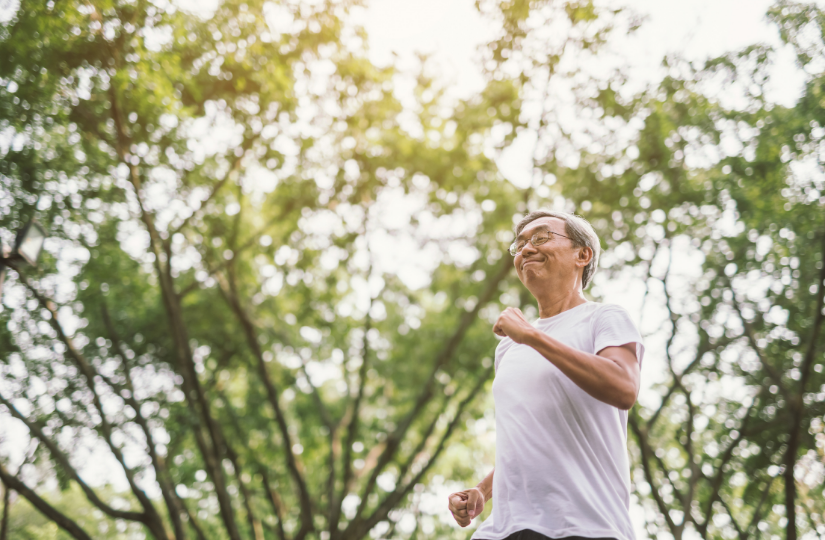
Exercise Parks for the Elderly are a Growing Trend
Cities all over the world are incorporating a long-standing feature of Chinese public parks to encourage seniors to exercise. This growing trend of exercise parks for the elderly is helping aging adults stay healthy, while enjoying their golden years.
On a study trip to China, Jay Maddock, a professor of public health at Texas A&M University in the United States, was struck by one feature of the Chinese culture. “I went for a walk in Nanchang’s municipal park near my hotel and witnessed hundreds of old people exercising together,” he recalls.
Inquisitive, Maddock sought to collect statistics on geriatric park utilization in eight Nanchang parks. “We discovered that over half of the users are elderly individuals,” he explains. “In the United States, no research has ever identified more than 15%.”
It’s a frequent sight in parks around China: rather than lone runners or cyclists, big groups of elderly are the most common population. Every morning, throngs of senior people congregate in public parks for their regular exercise practice, which may include dancing, Qiqong, or simple gymnastics. Many people use ellipticals and pulldown machines, which are designed for modest aerobic exercises and gentle strength training. These bright exercise machines may look like those found at children’s playgrounds, but they are designed for elders.
‘Senior playgrounds’ are being introduced outside of China as governments around the world try to maintain their aging populations healthy for longer than ever before. Senior playgrounds can be found in cities such as London, Berlin, and Toronto. However, constructing these facilities is only one component of fostering a culture in which retirees feel comfortable exercising.
According to Elisabeth Hsu, an anthropology professor at Oxford University, the elderly Chinese people’s morning exercise habit stems from a long-standing cultural custom. The Huangdi Neijing (The Yellow Emperor’s Inner Canon), a book covering medical information from the 3rd Century BC onwards and considered the pillar of traditional Chinese medicine, has guidelines for getting up early. She adds that the collective part of exercise likely dates back to government-sponsored group exercise in the 1950s when today’s elders were growing up.
Professor Anastasia Loukaitou-Sideris, an urban planning professor at the University of California Los Angeles who has studied park use among the elderly in various countries, claims that while culture plays a role, park location, design, and amenities have the greatest impact on senior citizens’ use. “A lot of the time, elderly people don’t feel welcome in parks that are primarily created for younger people,” she explains. “In other words, parks are not accessible to them psychologically.”
The findings of Loukaitou-Sideris are similar to those of Maddock, who studied parks in Nanchang. “The parks we looked at weren’t suited for kids,” he explains. “We didn’t see any basketball [hoops] or baseball grounds, but we did see adult-oriented walking routes and machines.”
Indeed, age-specific design characteristics are responsible for the success of some of the most well-known senior playgrounds outside of China. When Harry Cane, a retired pharmacist from Delta, Canada, returned home from a trip to China, he was so inspired by senior parks that he offered the idea to the local council. “Cane chose workout equipment based on what he saw in China,” says Dan Copeland, a Delta city councilor, who adds that the most popular machines address common aging difficulties like balance and dexterity. The Lion Wellness Park in Delta has raised exercise rates among local older persons since its opening in 2007, according to Copeland, and has been copied in 18 other places across British Columbia.
It’s also important to be accessible. The Hyde Park Seniors’ Playground, nestled among oak trees, opened in 2009 to provide six exercise machines for the elderly. It was chosen for its position because of its proximity to roads and public transportation, both of which are around a 15-minute walk away. In addition, a feasibility study suggested employing easy-to-read signs to properly label and provide instructions for equipment geared at older persons. Machines at Hyde Park, like those in Delta, were chosen to meet the physiological demands of older persons, including stretching and strengthening.
The Spanish province of Málaga has built one of the greatest senior playground programs, with 400 such facilities today. However, many are now underutilized, according to Rafael Merino-Marbán, a professor of physical education at the University of Málaga. “The government has not investigated the optimum location or the right kind of machine to maximize efficacy,” he adds, noting that a more in-depth assessment of customers’ needs is presently ongoing as part of a European Union project targeted at increasing senior exercise.
Apart from location, Merino-Marbán mentions proximity to children’s playgrounds, dilapidated equipment, and the fear of being evaluated as impediments to elderly persons using public playgrounds to exercise. “When it comes to the dread of being judged,” Maddock says, “design may help.” “Exercise grounds in China are frequently positioned in little groves separate from the rest of the park, reducing the number of observers.”
Despite the difficulties, Merino-Marbán believes that 50,000 individuals use Málaga’s senior playgrounds on a weekly basis. He hopes that the government will build additional and better-designed playgrounds in other cities in the future. “Older folks who exercise more are healthier,” he asserts. “And it means lower healthcare bills for the general public.”
One of the main motivations for making senior playgrounds a standard component of urban planning, according to Maddock, is to save money on healthcare. “A growing number of studies suggest that elderly individuals require exercise, social interaction, and exposure to outdoors,” he explains. “Senior parks are a low-cost initiative that addresses all three of these issues.”
In addition, as the effects of contemporary lives, sedentary professions, and motorized transportation continue, China may need to create more senior playgrounds. “Obesity and diabetes rates are rising,” Maddock observes. “In addition, as the urban population grows, more exercise places will be required.”
